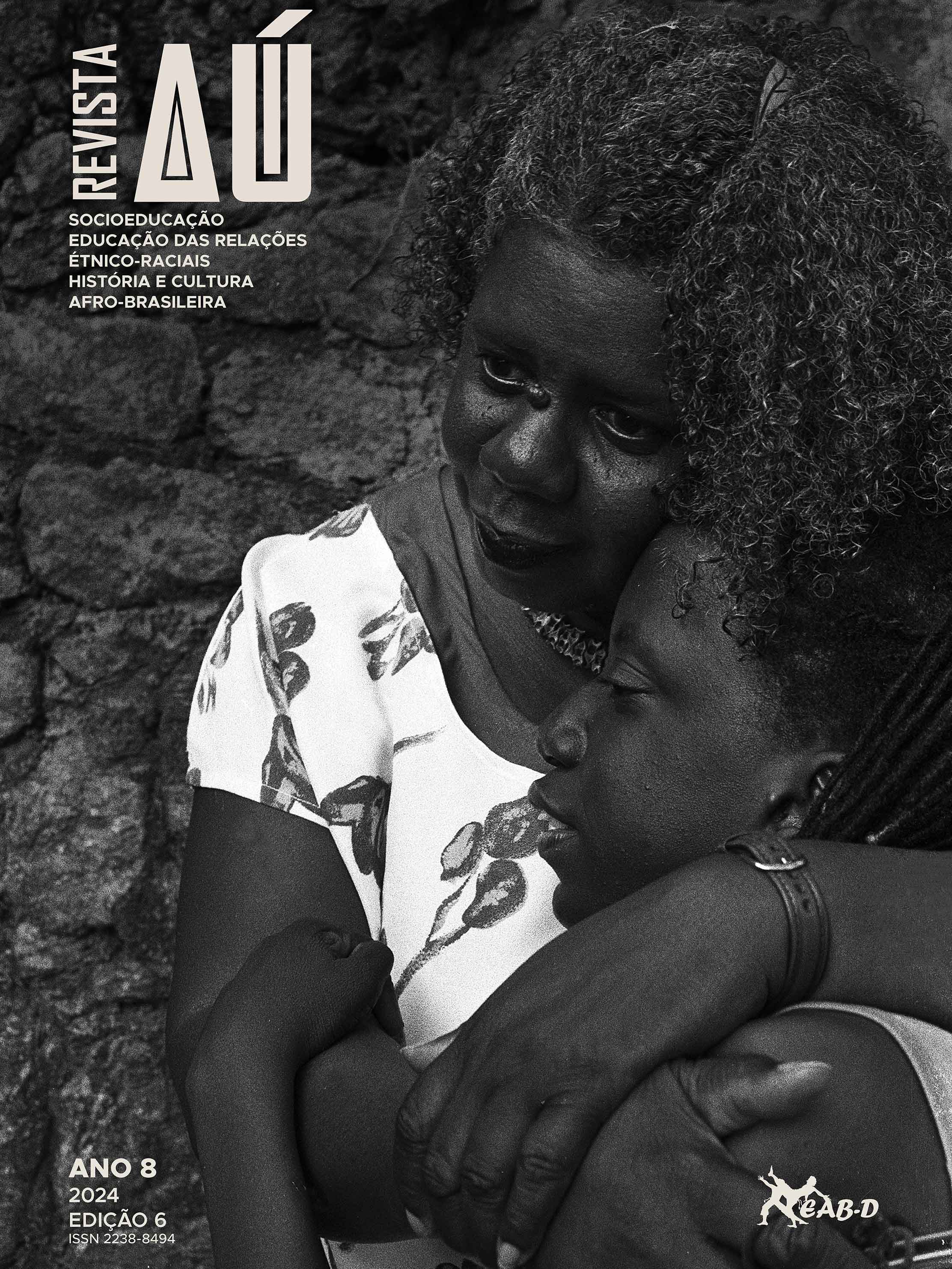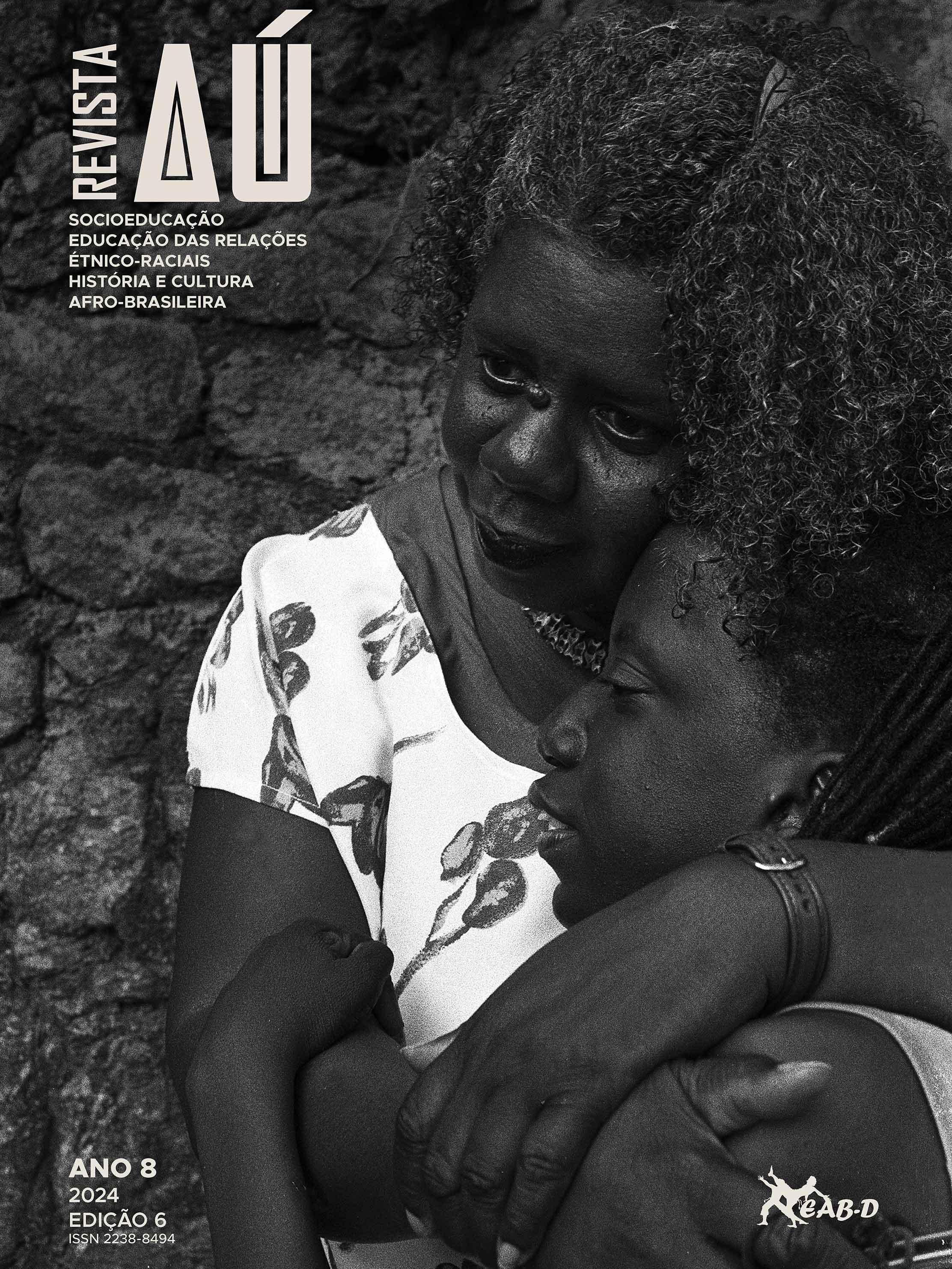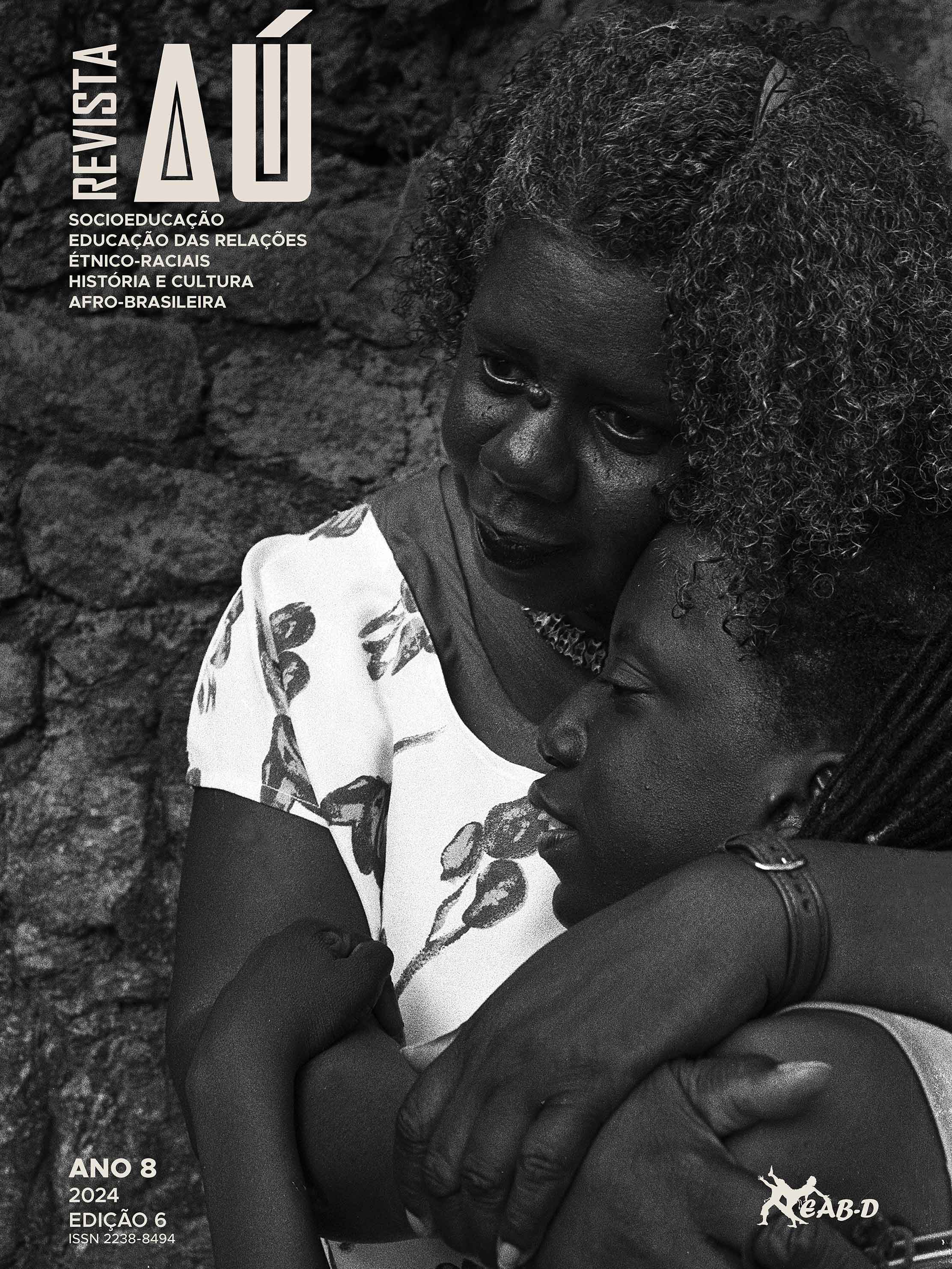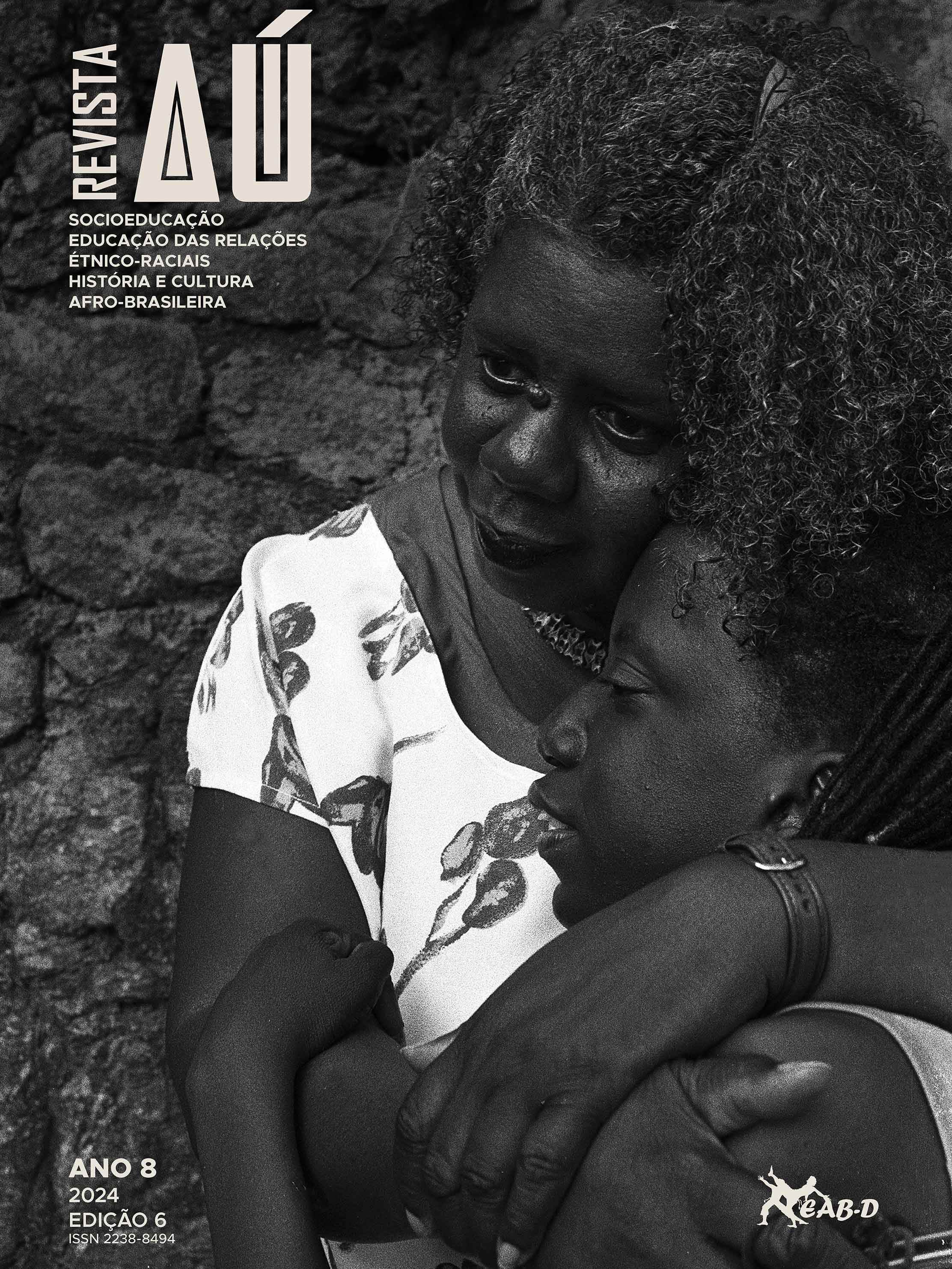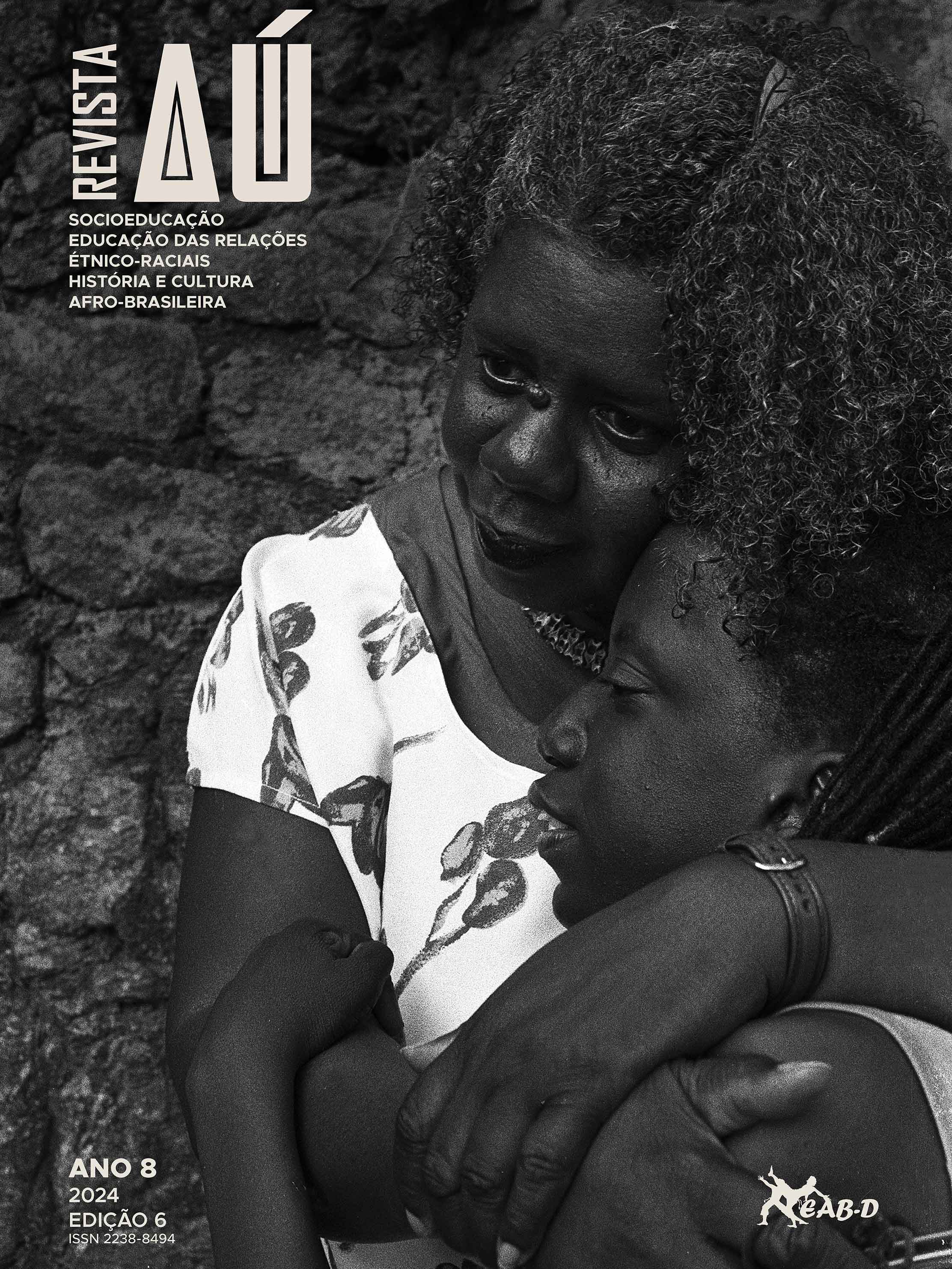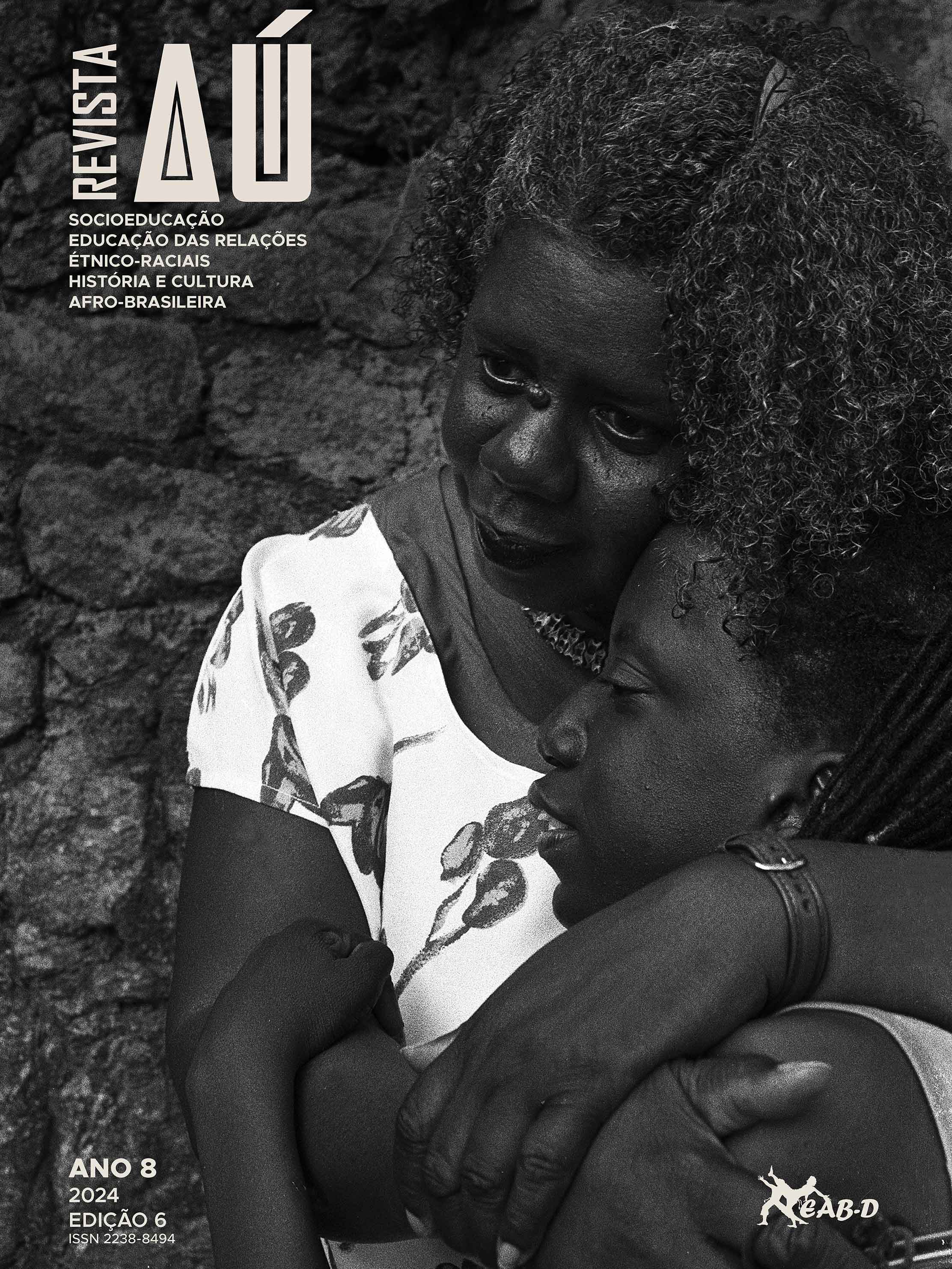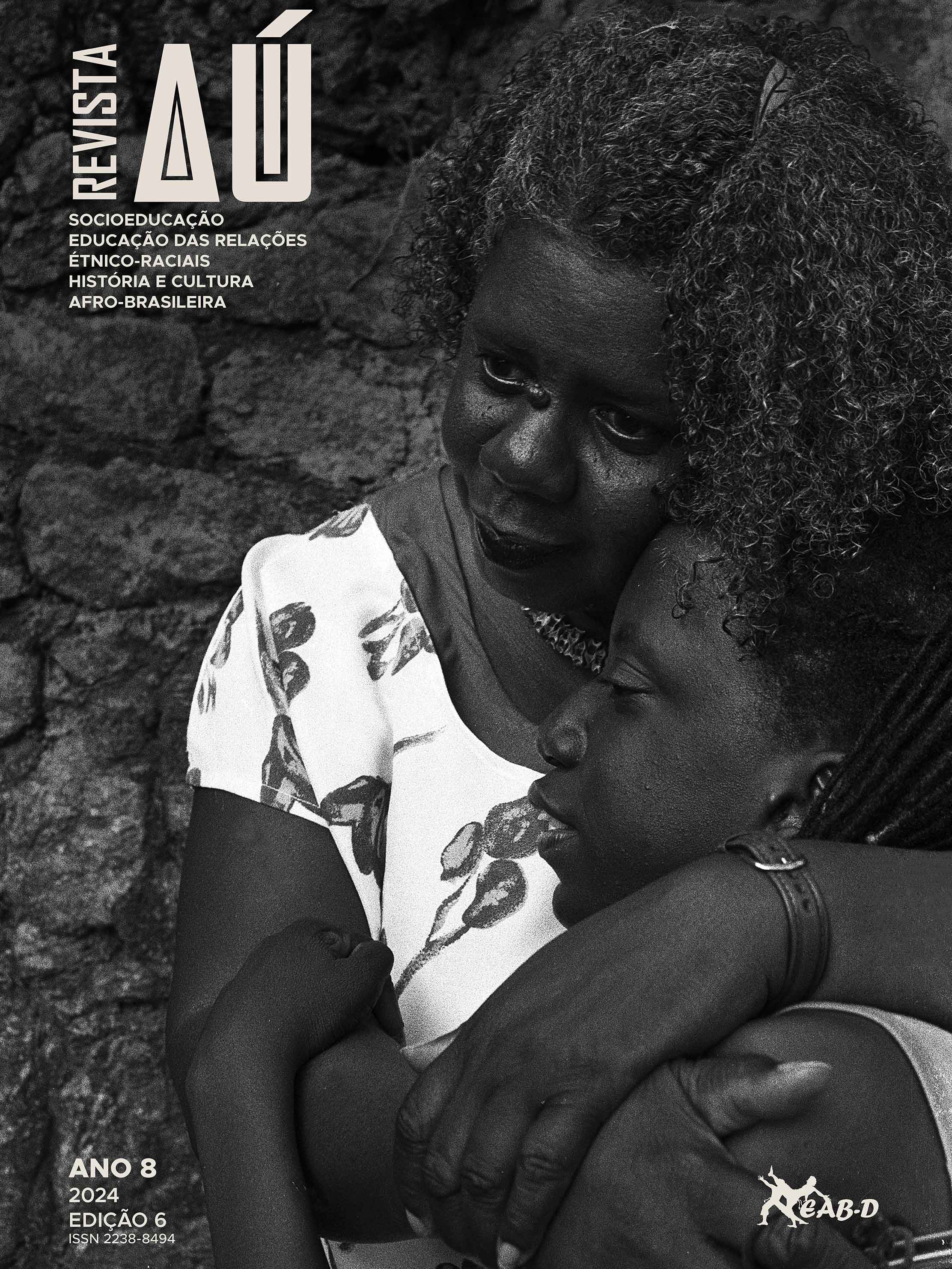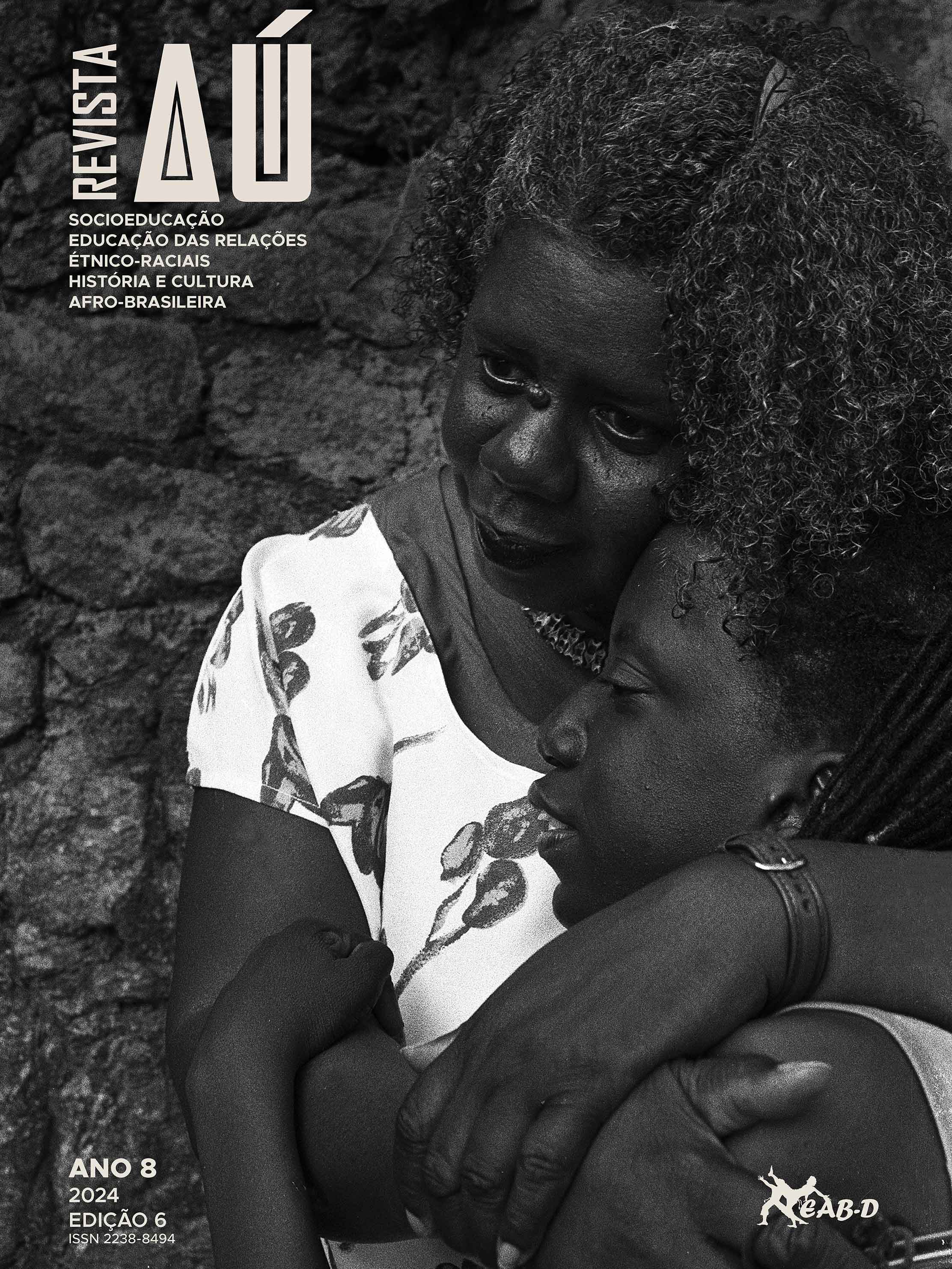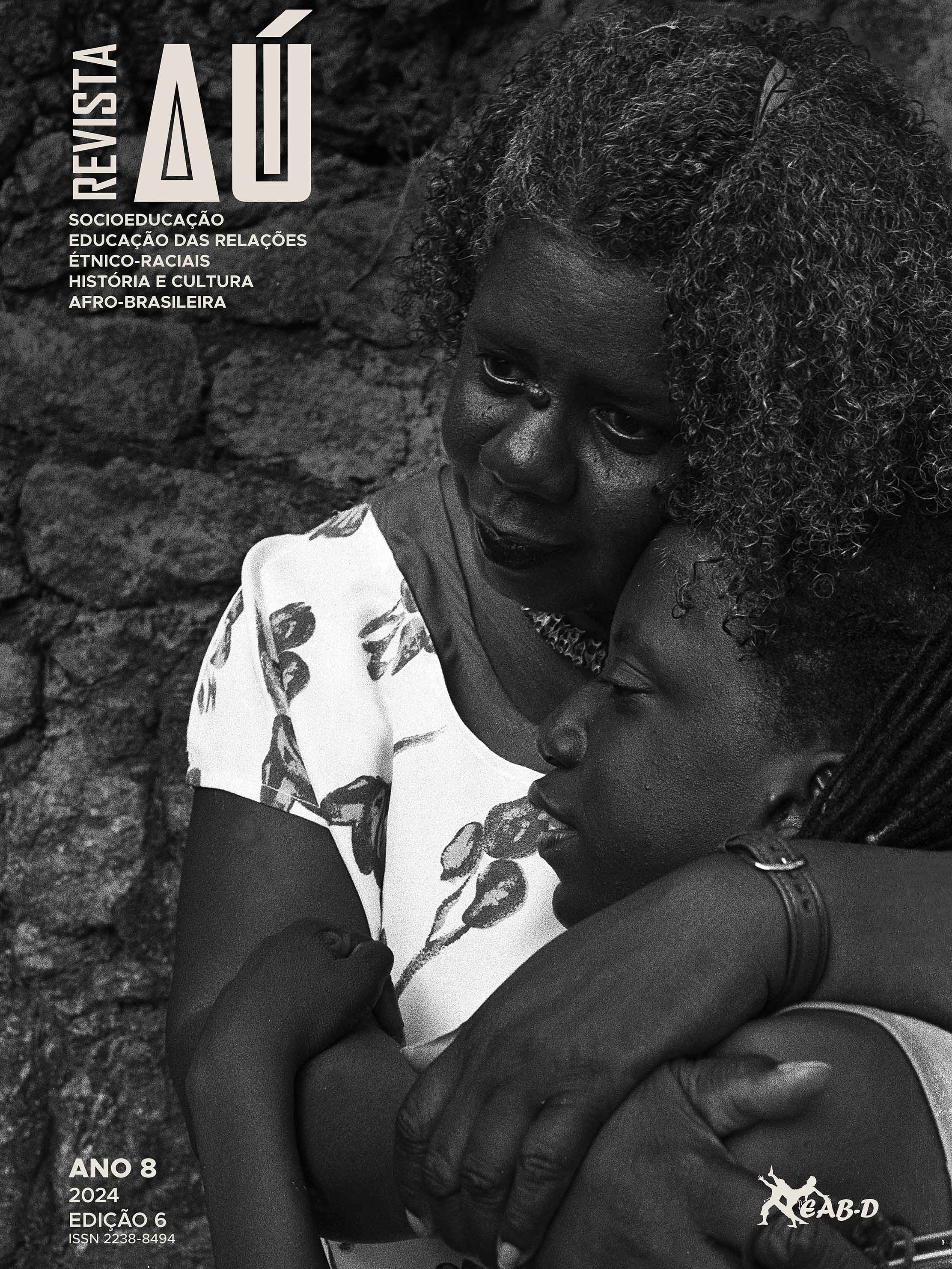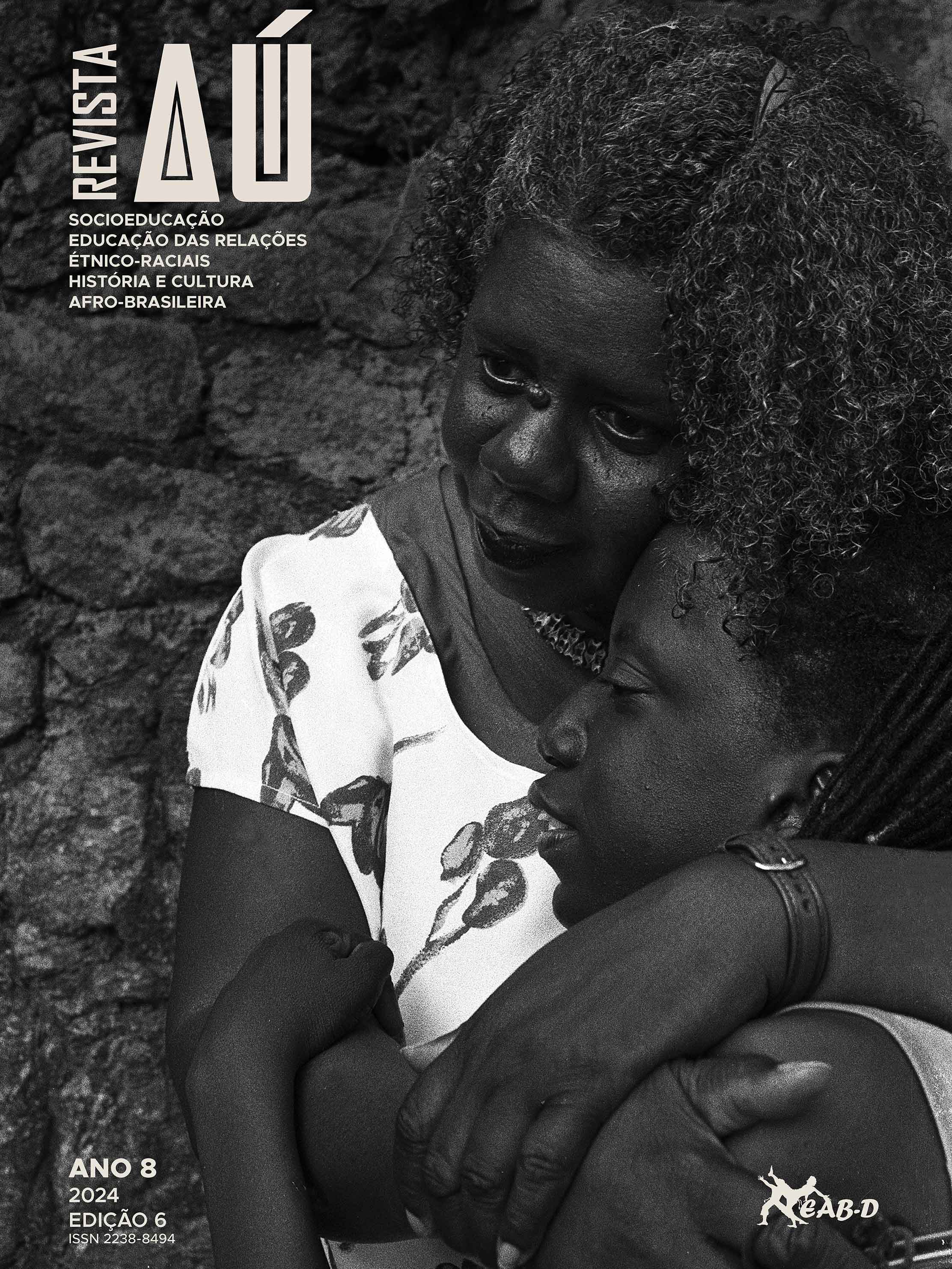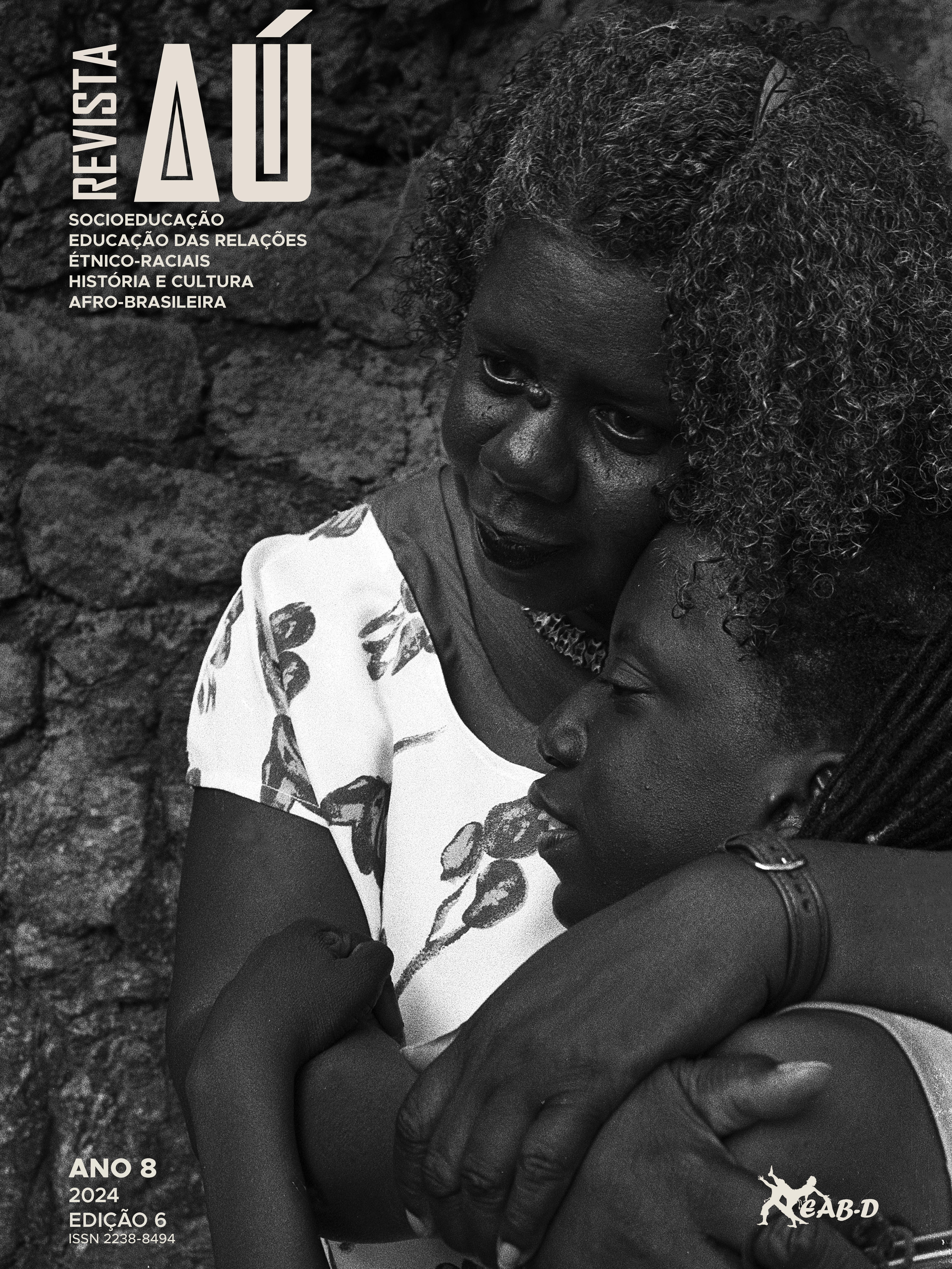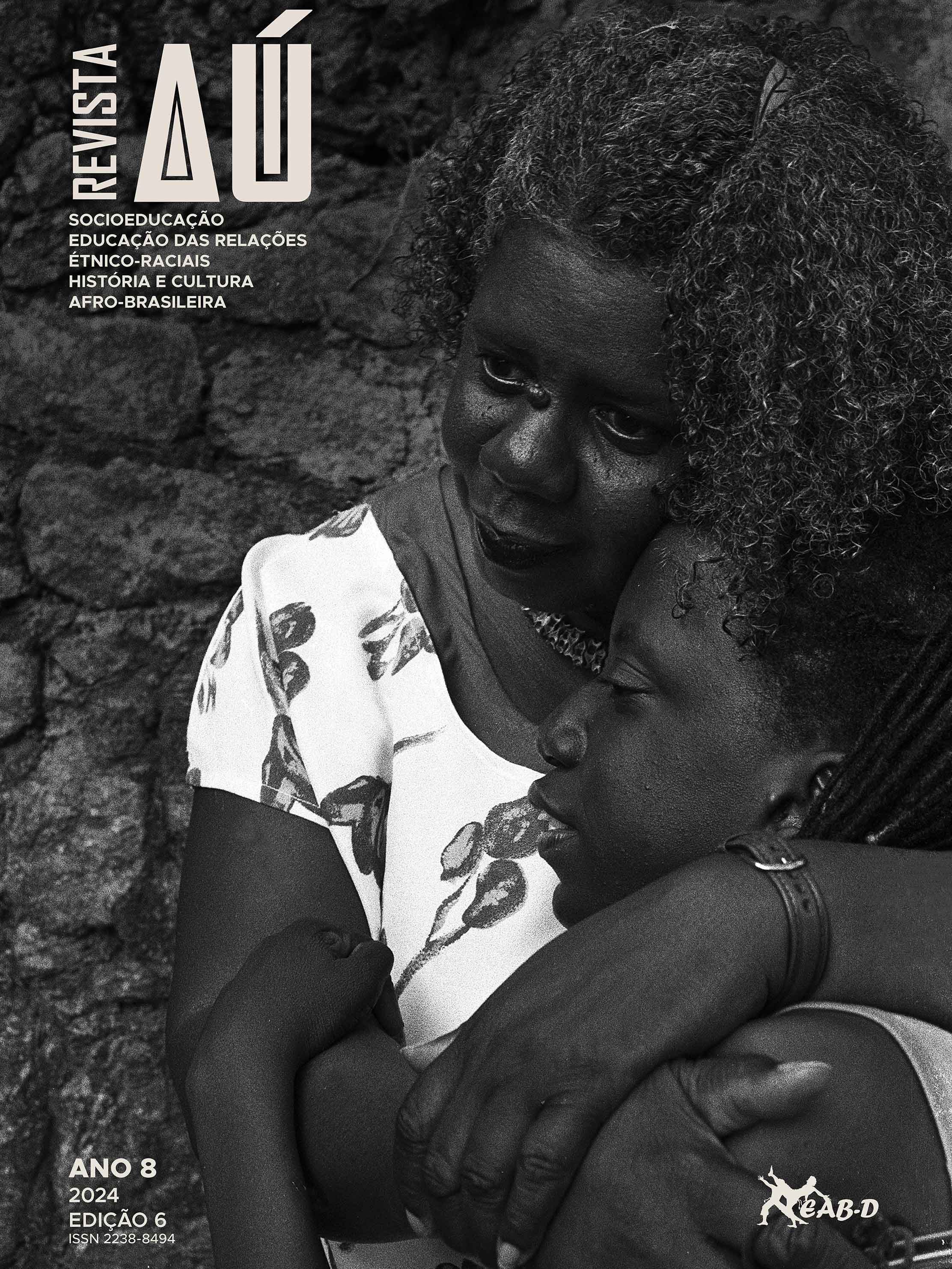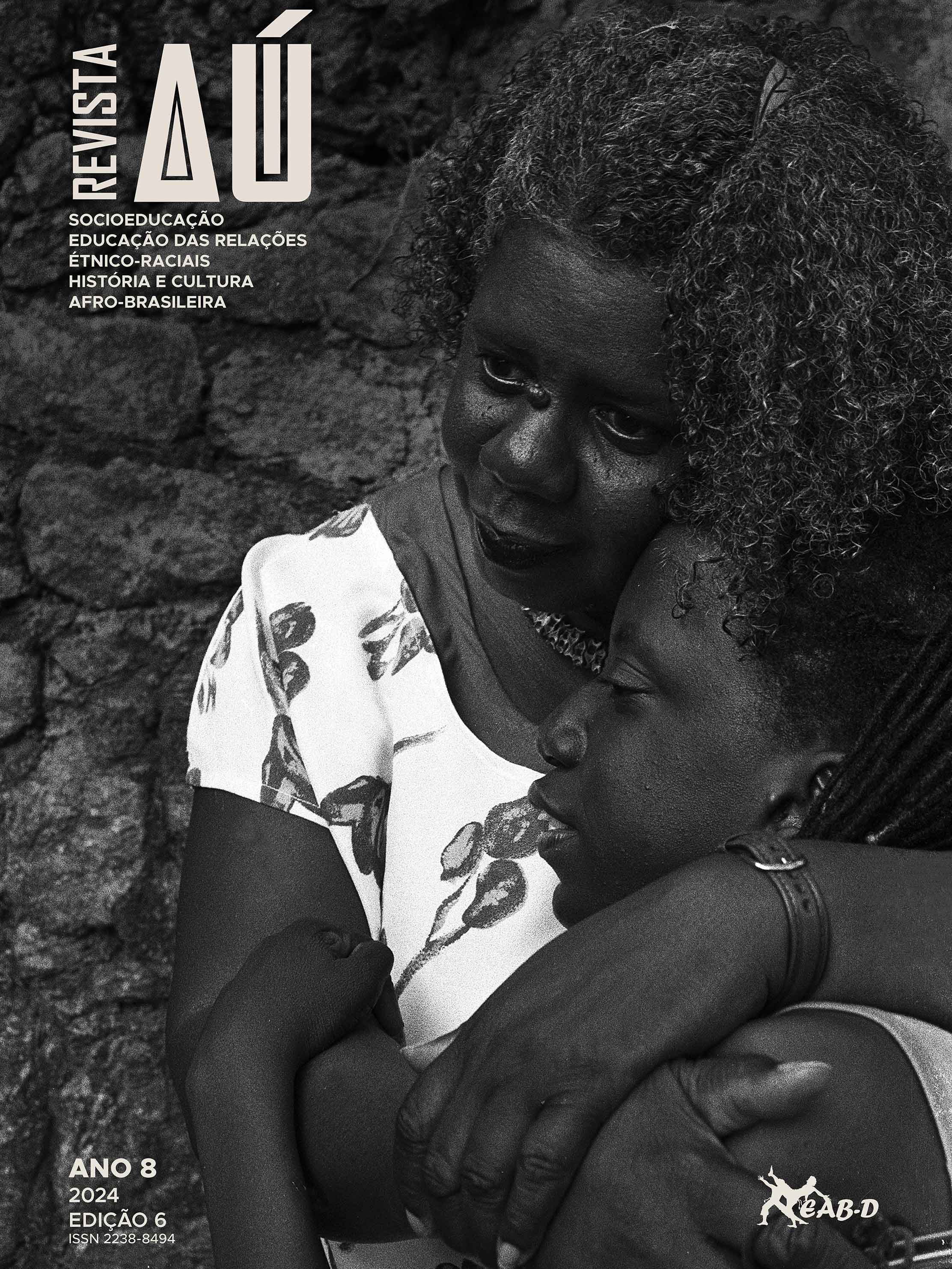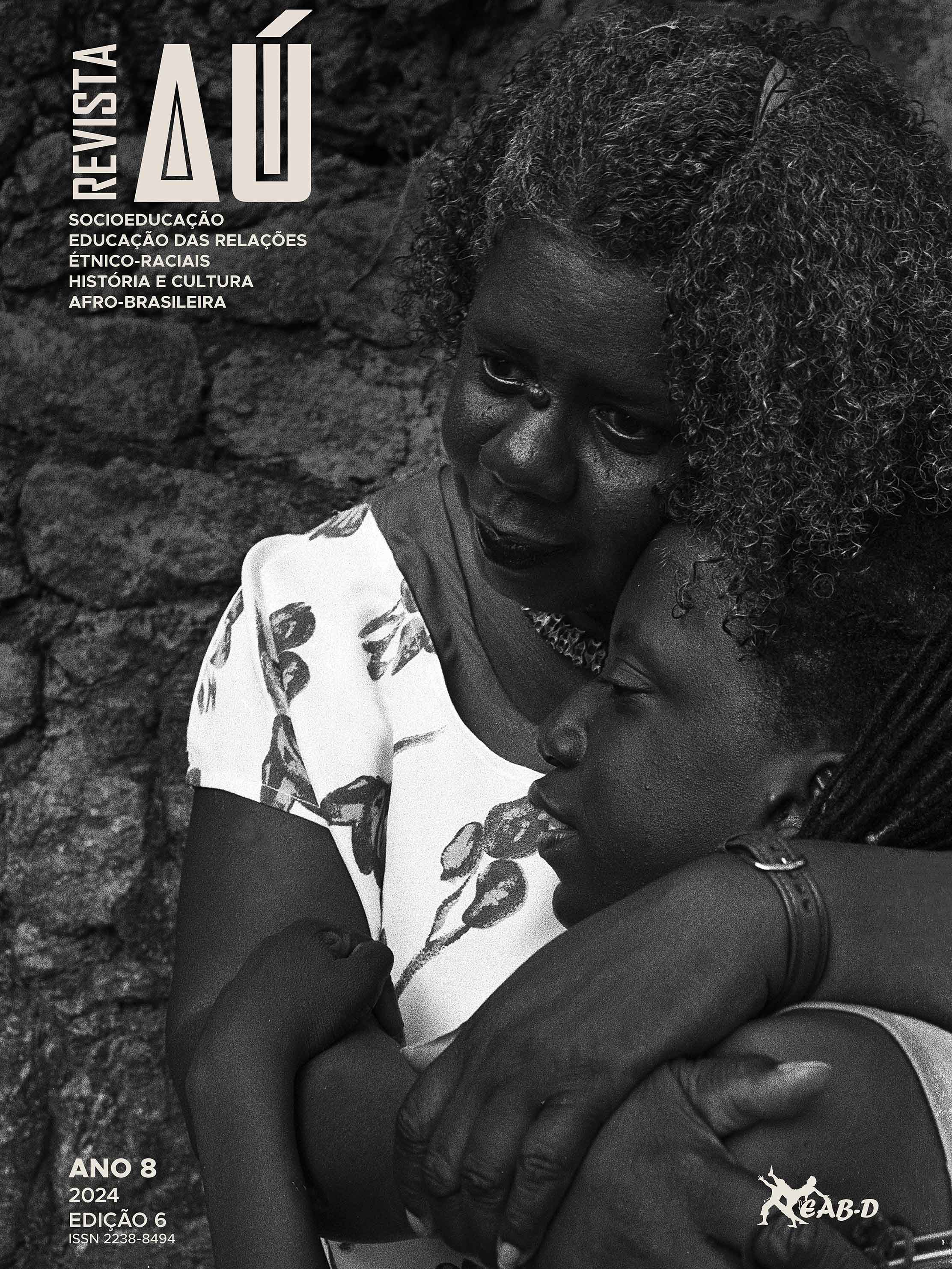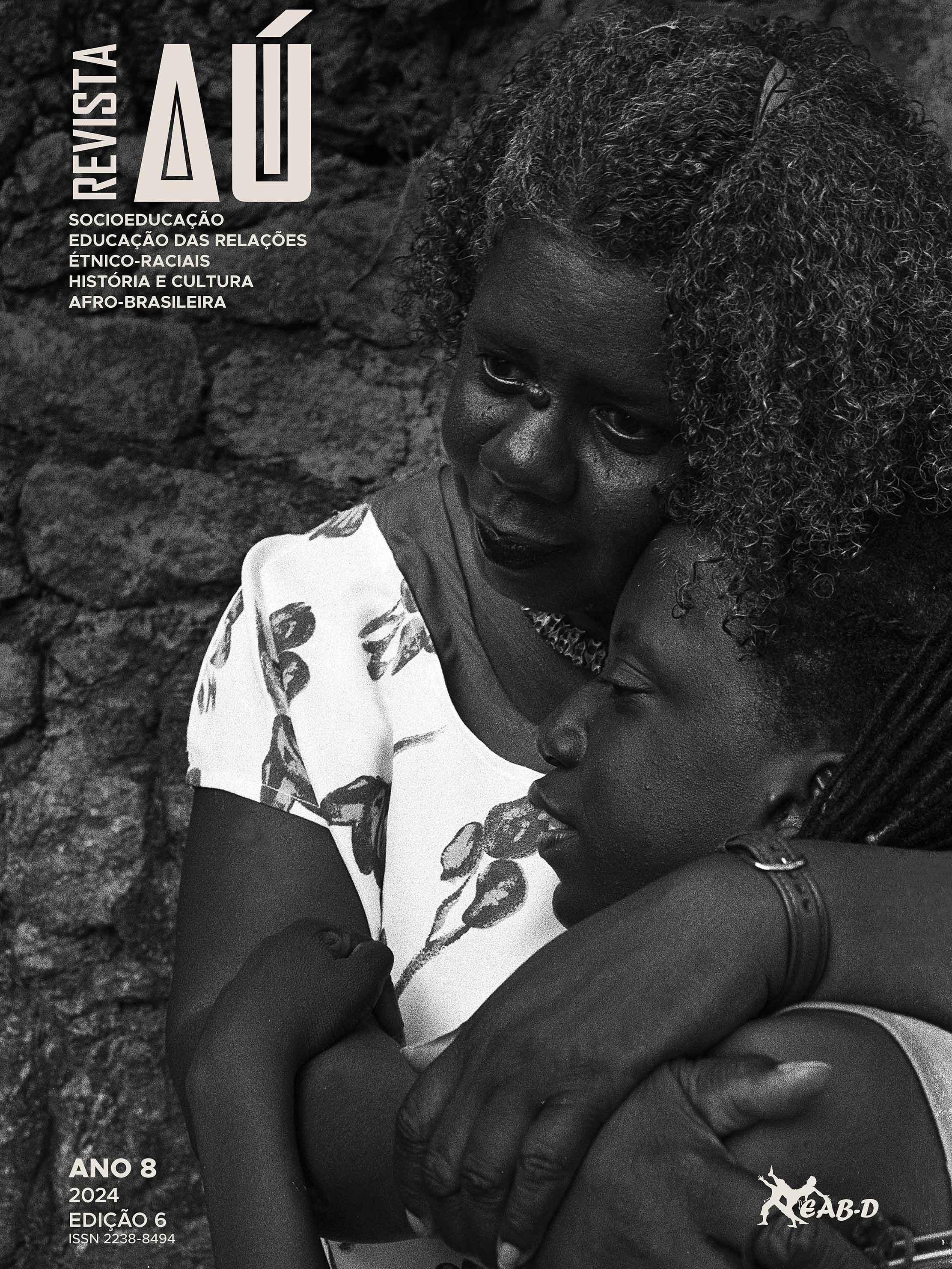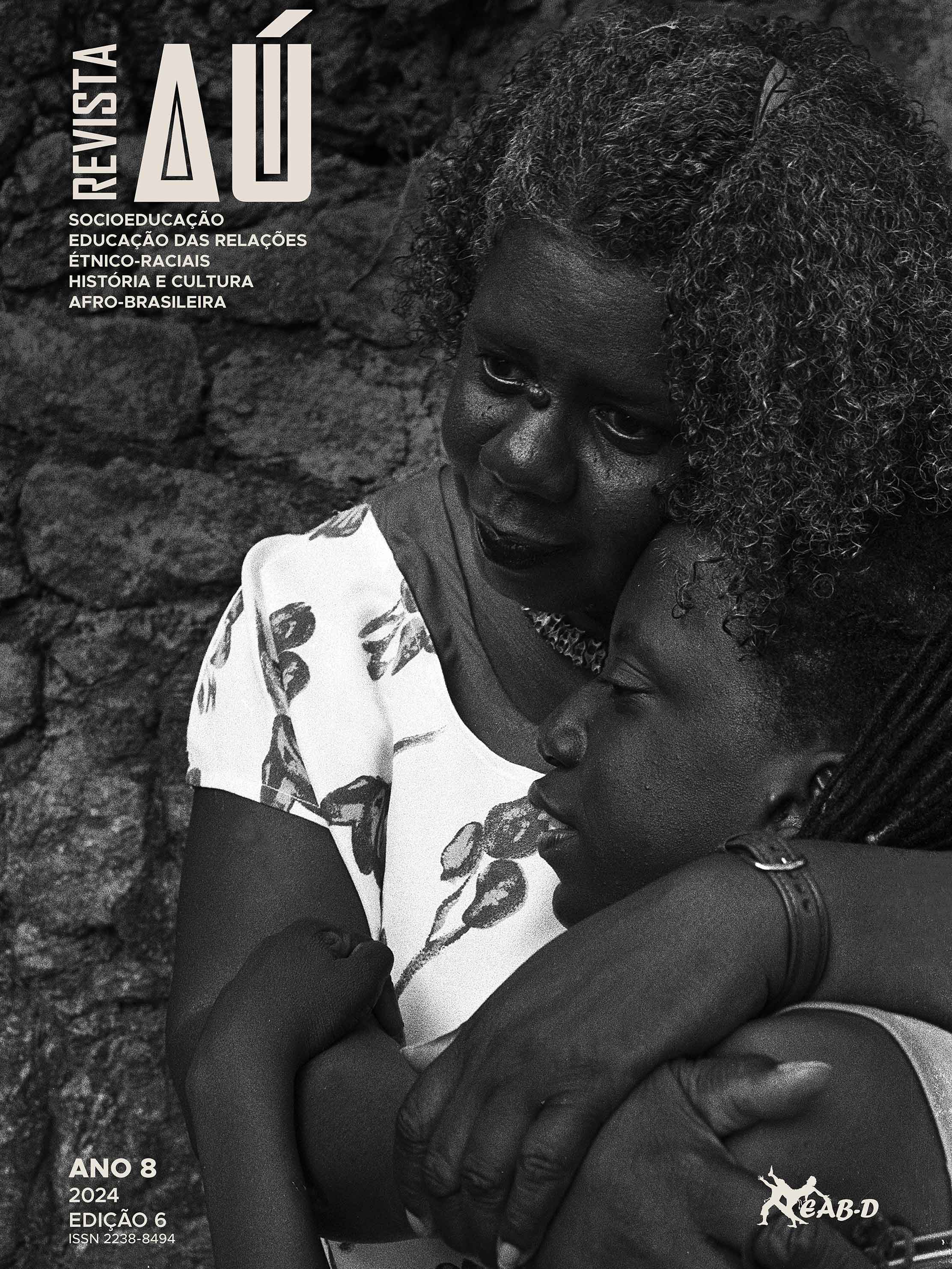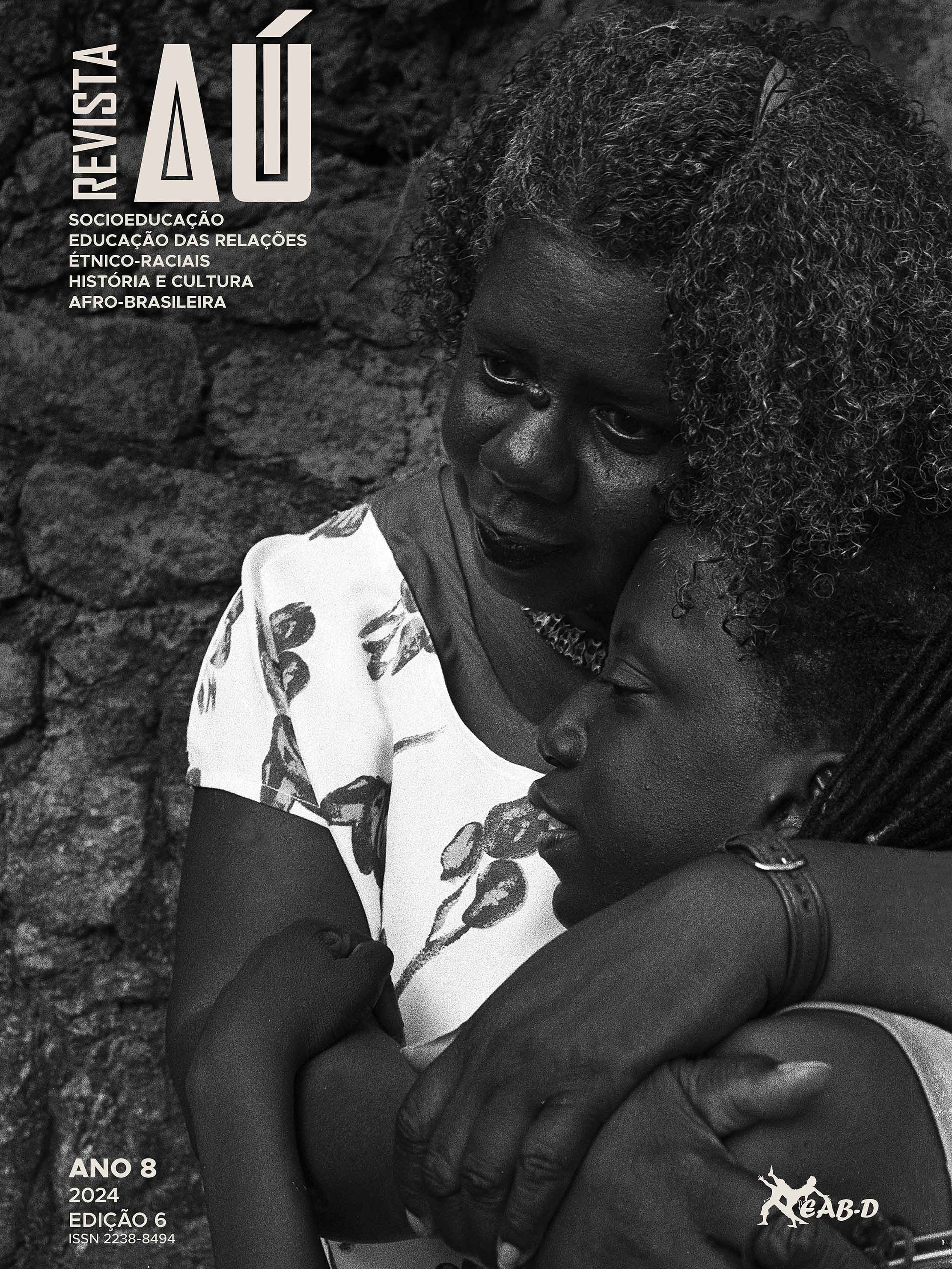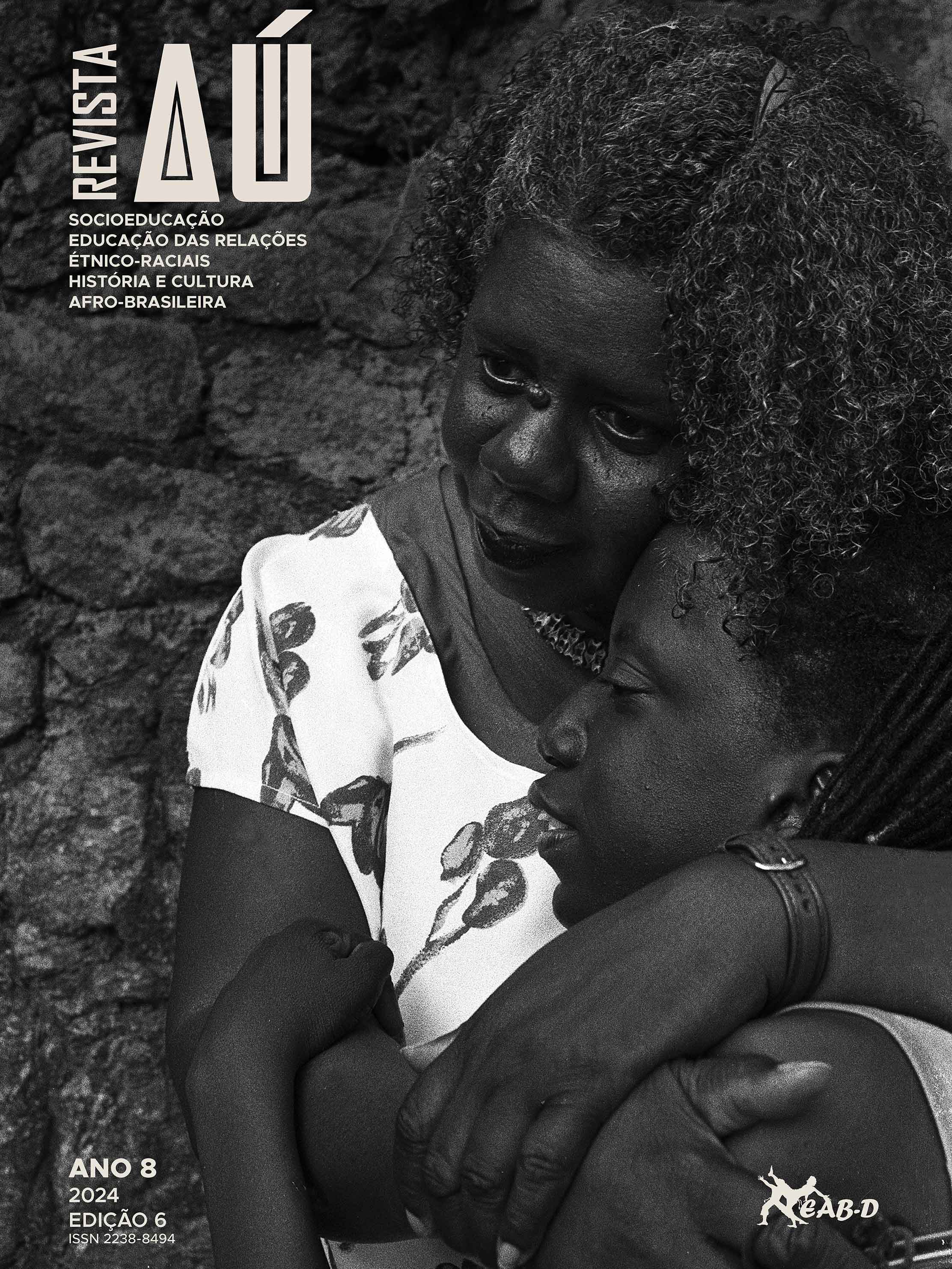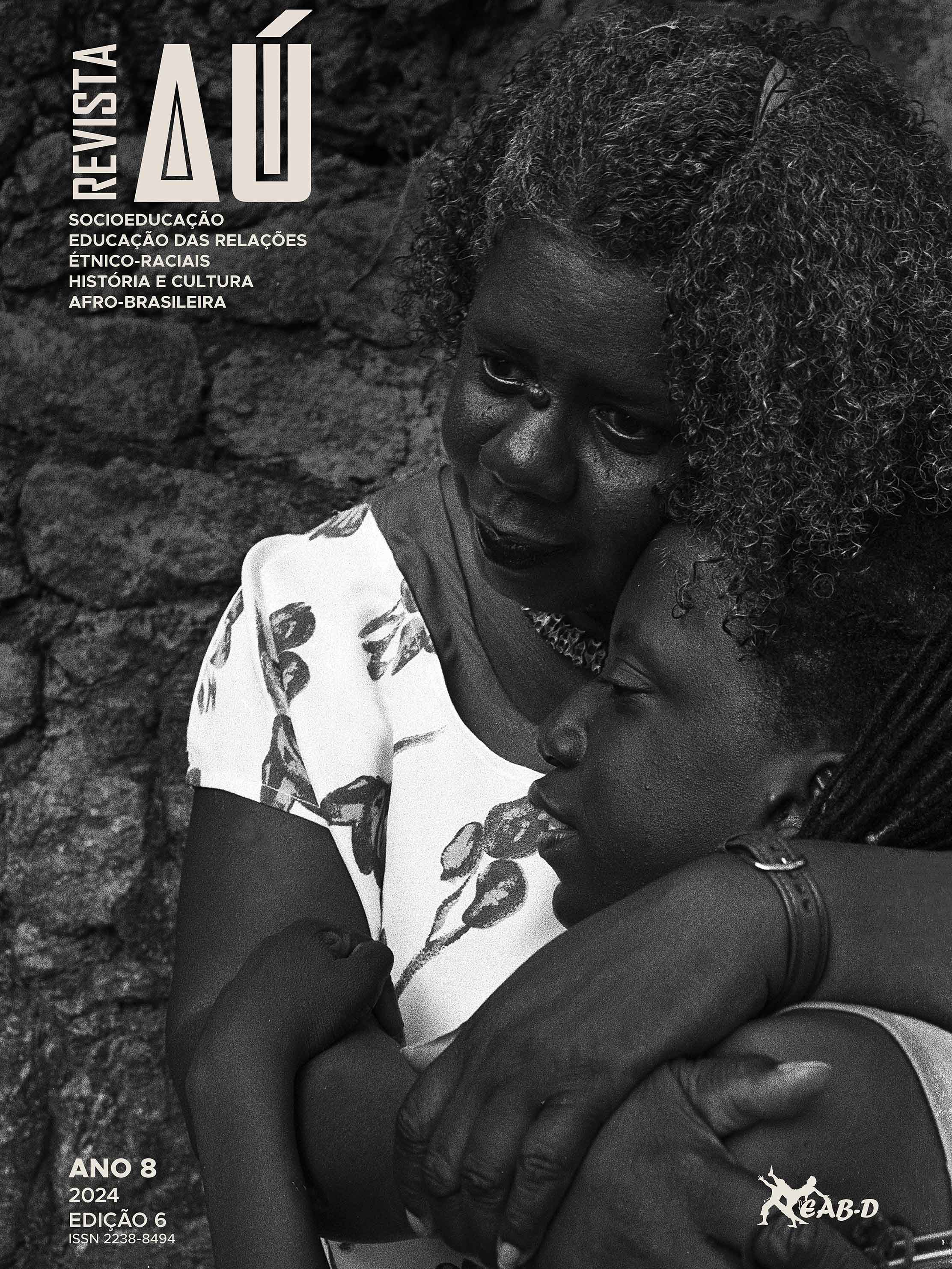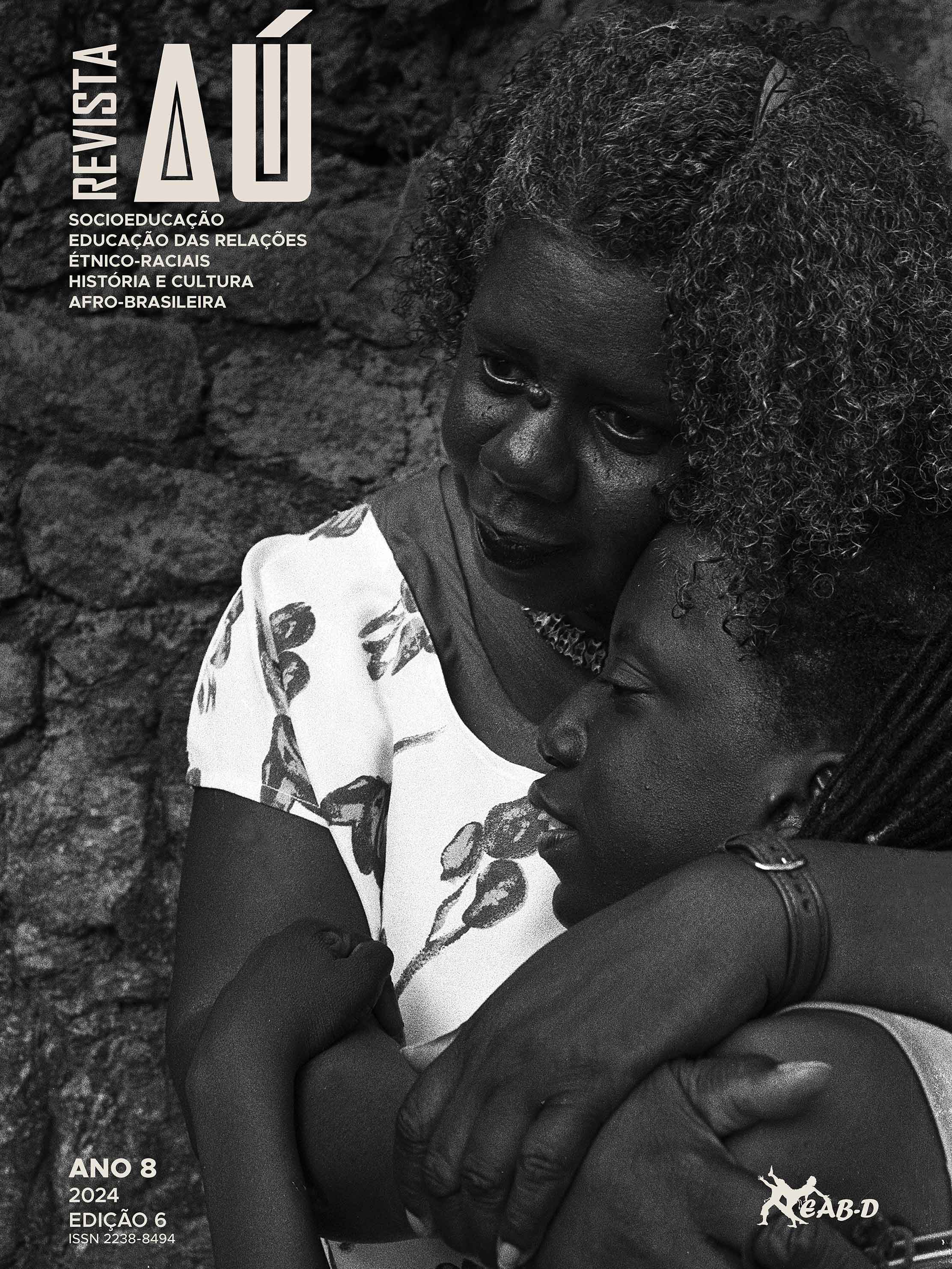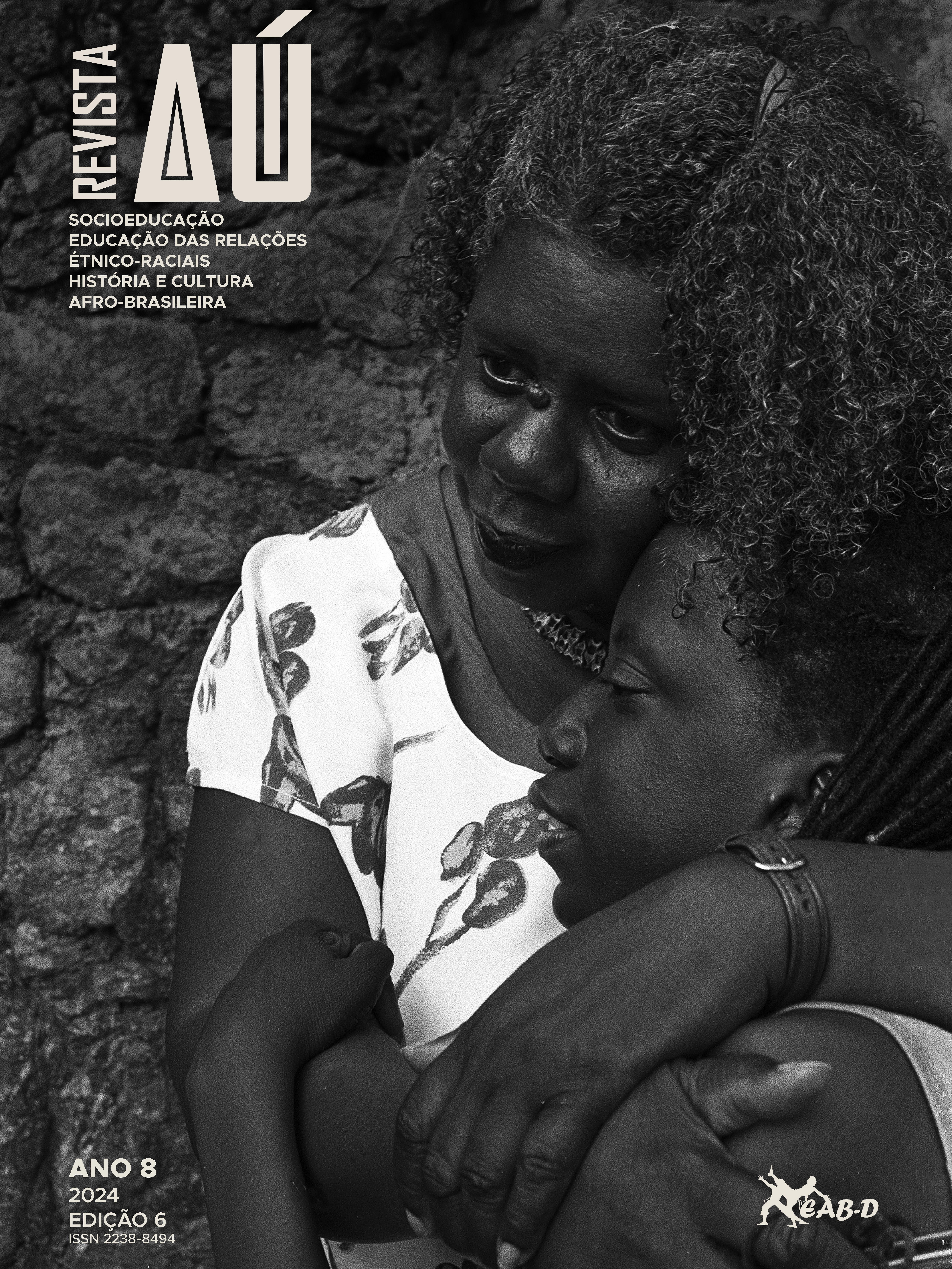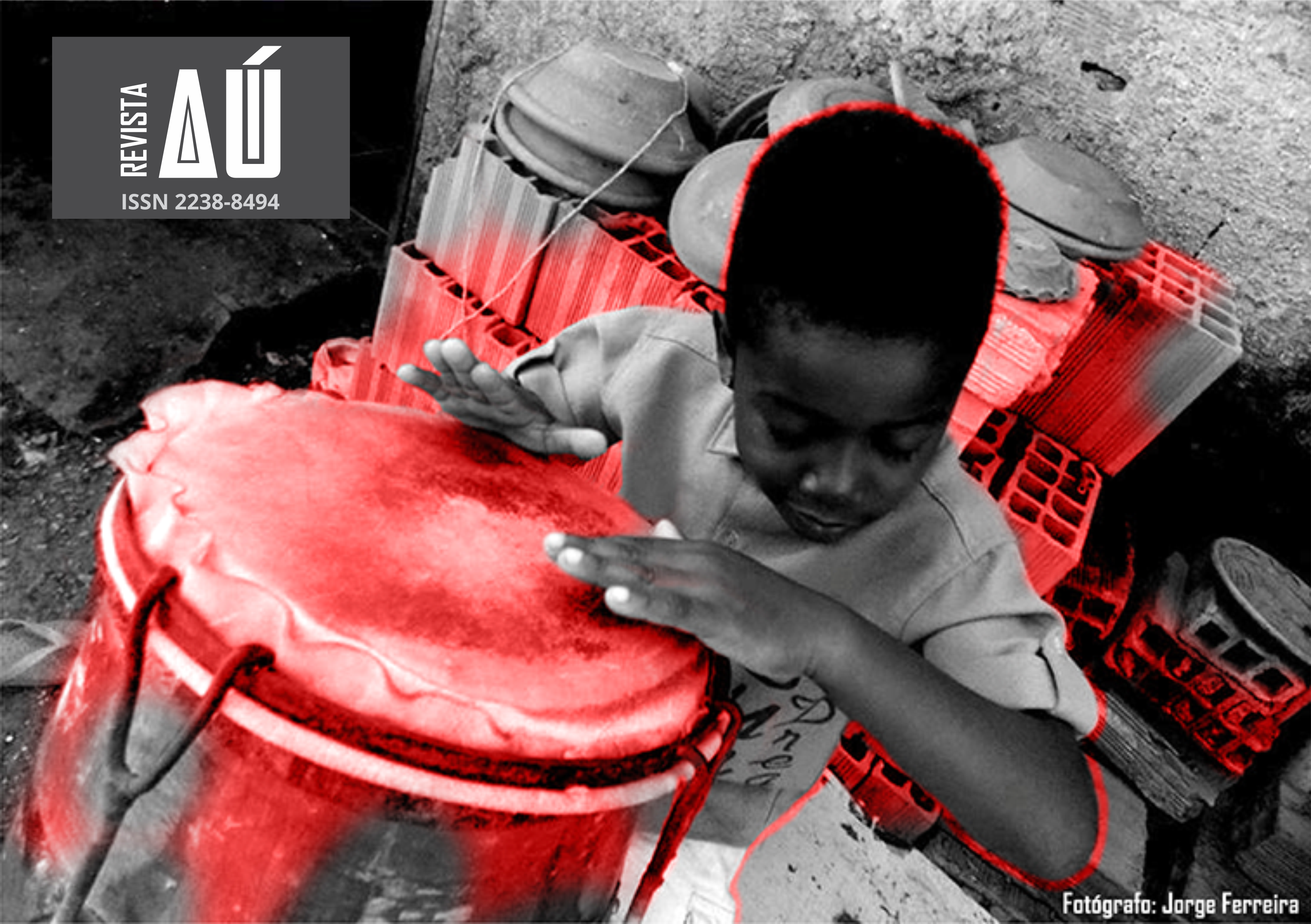
About the Journal
About the Magazine
On May 13, 2015, we launched the New DEGASE African-Brazilian Studies Center (NEAB-ND). It was the date of the 127th anniversary of the signing of the Golden Law that officially ended black slavery in Brazil. However, for the Brazilian Black Movement, this date has another meaning, the National Day to Combat Racism is celebrated. The fight against racism is the first concern of our group. From this perspective, we launched Revista AÚ with the intention of sharing with actors from outside the socio-educational system the actions developed by NEAB-ND.AÚ is a movement in capoeira. A blow with multiple variations and possibilities for reinvention. From its second issue, Aú Magazine is divided into sections with names linked to capoeira, a struggle invented by Afro-Brazilians in the slave quarters as resistance to oppression.
The Aruanda section [1] recalls and honors black personalities that are part of Brazilian history. The magazine also features the Roda section [2] composed of articles developed by the teachers of the Afro-Brazilian Studies and Socio-Education course, conducted annually by the NEAB-ND. The textual production of DEGASE employees comes in the section Trainel [3]. Aú Magazine also presents Espaço Caxinguelê [4] with production of socio-educated students. We completed the edition with the Berimbau [5] sections, a transcribed article from a lecture given at the annual Meeting on Race Relations in Socioeducation, and Zum, zum, zum [6] review of a book by a black author or author.
Good reading!
[1] Place where the orishas live, sung to this day on the wheels.
[2] Circle formed by capoeiristas where two people, in the center, play capoeira, being replaced by others during the game, while the people who are in around clap their hands and answer the choir sung and played by capoeiristas.
[3] Stage in the trajectory of capoeira practitioners.
[4] Boy and girl playing capoeira.
[5] Percussion instrument controls the capoeira wheel, rules the rhythm and the game (gourd, wire and a stick.)
[6] Comments.
Current Issue

A vida exige que tenhamos jogo de cintura, que saibamos que não existe um só modo de solucionar situações. Em alguns momentos, devemos ser duros e, em outros momentos, a ginga e a fluidez serão os nossos pontos de transformação. O provérbio bantu africano “A árvore que se dobra com o vento não se quebra” representa o que entendemos por estar em “estado de Aú”. Um processo formativo continuado em relações étnico-raciais tendo a cultura afro-brasileira como centro. É essa a prática que nos move.
Nesta edição, o I Seminário Socioeducação e Relações Étnico-raciais, evento organizado pelo Núcleo de Estudos Afro-brasileiros do DEGASE -NEAB-D, pela Escola de Gestão Socioeducativa -ESGSE e pelas Coordenações de Atenção em Saúde Integral e Psicossocial - COOSIP e de Educação, Cultura, Esporte e Lazer – COOECEL do DEGASE, acontecido em dezembro de 2023, no auditório da Procuradoria-Geral do Estado – PGE Rio de Janeiro, serve como guia. As relações étnico-raciais e o racismo estrutural e estruturante na sociedade brasileira, bem como sua interface com as Políticas Públicas, com especial ênfase na Socioeducação, motivaram o seminário e dão o tom da Aú, número 6.
Reverberamos, na Seção Aruanda, as falas dos palestrantes do Seminário, enquanto, na Seção Treinel, a audiência do Seminário assume o protagonismo. Nas seções Berimbau, Caxinguelê, Aruanda, Capoeiras e Zum zum zum, o nosso time de articuladores mantém o jogo em alta e professores e professoras de universidades públicas e privadas de qualidade seguem o ritmo.
Neste número, inauguramos a seção Volta ao Mundo. A seção, com textos do Prof. Raul Japiassu Câmara, terá a história da Socioeducação como mote de reflexão sobre racismo no Brasil. O texto de abertura da seção tem o sugestivo título “Conter para regenerar: seria a missão das primeiras instituições federais de menores?”.
Na capa da revista Aú, temos a imagem da grande escritora Conceição Evaristo em um abraço afetuoso em sua filha Ainá. A imagem captada por Adriana Medeiros faz parte da exposição “Negras(fotos)grafias”, da Coletiva de Fotógrafas Negras, que tem curadoria de Simone Ricco e Bárbara Copque. A exposição ocupa a nossa seção Galeria Januário Garcia.
Envergando sem quebrar, chegamos a mais uma revista Aú.
Boa leitura!!!
Full Issue
Expediente
Sumário
Seção Roda
Seção Treinel
Seção Caxinguelê
Seção Aruanda
Seção Berimbau
Seção Zum-zum-zum
Galeria Januário Garcia
Seção Capoeiras
Seção Volta ao Mundo
Ficha Técnica
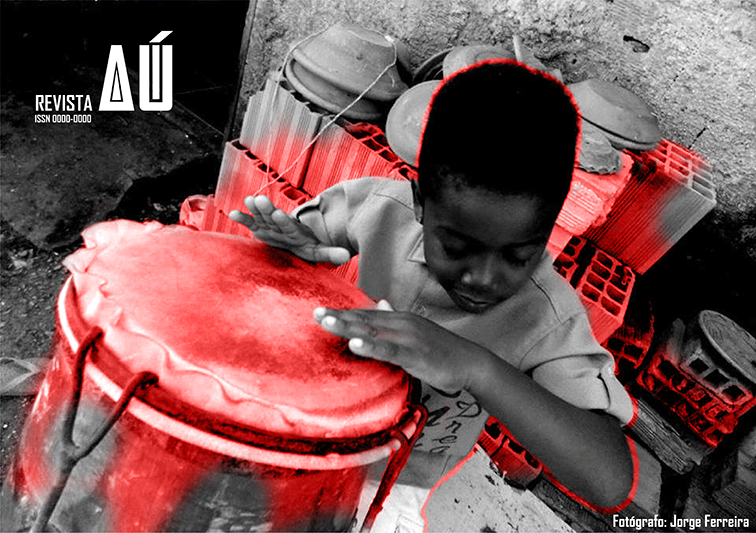
Em breve teremos disponíveis para nossos leitores e leitoras a Revista Aú, Volumes I e II.

